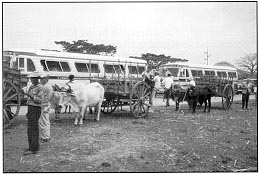April 16
| 1926 | The Ohio State Highway Commission opens bids for construction of a 4-mile section of the Lincoln Highway east of Delphos. Although the State had wanted a macadam surface, BPR refused to participate in anything less permanent than concrete on this major highway. Bids are $71,322 for oil-bound macadam, $72,156 for tar-bound macadam, $84,367 for Kentucky asphalt, and $91,982 for concrete. After some hesitation, the State awards the contract to G. H. Heffner for concrete construction. | |
| 1938 | Chief Thomas MacDonald transmits a report to Colonel James Roosevelt discussing the feasibility of direct toll roads, with excess condemnation, on lines drawn by Roosevelt's father, the President, on a national map-the report is the predecessor to part one of Toll Roads and Free Roads. (See April 27, 1939.) | |
| 1958 | President Dwight D. Eisenhower signs the Federal-Aid Highway Act, increasing Interstate construction funds and suspending the pay-as-you-go-feature of the Federal-aid highway program for FY's 1959-60 as part of an economic stimulus package. | |
| 1963 | A motorcade of dignitaries from the United States, Canada, and Central and South America travels from Panama City to Mexico City in three buses to officially open the Inter-American Highway. The highway is now paved for 2,664 miles and the remaining 478 miles have an all-weather surface, making travel between the U.S. and Panama City possible at any time of year.
|

